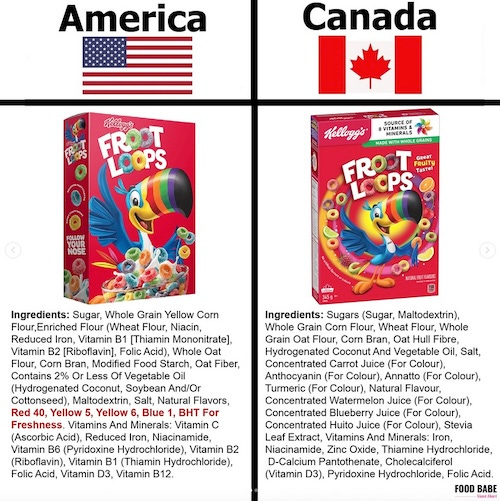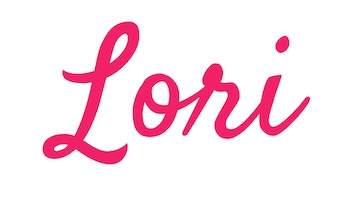I think most of us have a story around cereal.
Like the time you begged your mom for Lucky Charms because - marshmallows. It worked a couple of times, until she discovered a box of cereal without marshmallows, and it sat in the back of the cupboard for months. (Because why would you eat the cereal without marshmallows!?)
Of course, it didn’t end there. My sister and I each had our favorites. We’d stash boxes of it so we’d never be without it. I took that philosophy with me into my own home, and my husband and I would stock our favorites.
It morphed over the years. I tried eating healthier. Granola must be good - I’d check the ingredients to find one with the healthiest-sounding ingredients.
Guess what? Even that approach won’t tell you all you need to know about cereal.
The Growth of the Cereal Industry
You might say cereal has been around forever. You can trace it back to ancient civilizations, when people mixed grains with water. Think oatmeal, or porridge, or grits.
Of course, for most of us, our meaning of cereal started in the late 1800s when brothers Harvey and Will Keith Kellogg invented “corn flakes” as a healthier alternative to heavier breakfasts being served at the time.
The concept took off, and a new industry began. Others raced to the market, with Post, Quaker Oats, and General Mills all joining Kellogg’s, fiercely competing to gain market share. Cereal companies became pioneers in marketing and advertising techniques. They used mascots, jingles, and television commercials to target children and families. “They’re Great!” and “Trix are for kids” are ingrained in all of our minds.
Statistics show that 283.39 million Americans consume breakfast cereals. And if you look at the shelves in grocery stores, supermarkets, or big box stores, you know it’s only growing in size. When you have an entire aisle dedicated to it, it’s not going anywhere.
What are your favorites? I bet you didn’t have to think much without rolling several off your tongue. I know from watching carts at my local Costco store that cereal is one of the most frequent purchases. How about Cheerios? Or Frosted Flakes?
Or maybe Froot Loops …
When The Big Corporations Get Too Big
How many substances are added to our food supply? These includes food additives, color additives, and flavoring substances? According to the FDA, thousands of them are Generally Recognized as Safe (GRAS) and approved for use in foods.
The US takes the approach that substances are assumed safe until proven otherwise. That’s why many of these additives are in food products for sale in the US, yet are banned in other countries.
This begs the question: How do we know if they really are safe for consumption?
Companies have claimed for decades that these substances are safe. But shouldn’t we remain healthy as we consume them if they are?
And we know we aren’t healthy. Far from being healthy.
In Food Fix by Dr Mark Hyman, he says:
Eleven million people die every year from a bad diet. And more than a billion people in the world are overweight and sick from eating our processed, industrialized diet and not eating a healthy, whole foods diet.
Or maybe just look around.
Let’s talk about Kellogg’s.
I’ve been a fan of Food Babe for years. I have her books, read her articles regularly, and have purchased products from her company, Truvani. I like her message and I like her approach.
So I was cheering from the sidelines when I saw her testify from the Senate floor.
And I cheered again when she announced she would be bringing over 400,000 petitions to Kellogg’s headquarters in an attempt to get them to create healthier cereals.
Here’s what happened. She targeted Froot Loops, and asked Kellogg’s to adjust the ingredient list here in the US to match what is used in other countries.
Yes, other countries ban ingredients until proven safe. Therefore, Kellogg’s has to adjust its ingredients to include items acceptable to a country’s ingredient requirements. That means they don’t use questionable additives that can potentially cause harmful health consequences.
We don’t have the same regulations in the US, so Kellogg’s sticks with the questionable ingredients. Food Babe wanted to know why.
With 400,000 petitions in hand, and MANY supporters by her side, she marched to the headquarters, hoping to speak with someone. She was met with locked doors and a sign in the window that said, “Get off our lawn.”
Hmmm …
Simple Actions To Change Food For The Better
Kellogg’s is a huge corporation that has many brands you’ve eaten throughout your life. In 2023, they reported net sales of $2.3 billion, a 2.5 percent increase from the previous year.
They build those profits by marketing the majority of their cereals to children.
Hopefully, that won’t be working quite so well for them anymore.
Food. I’m seeing this as a way people can come together. Because it’s non-political. You can’t argue that safe food is liberal or conservative. It’s necessary. And we all should have access to good food.
I love this description because it’s accurate:
Dr Mark Hyman states:
While Democrats argue to create Medicare for All and Republicans argue to reduce entitlements to bring down our $22 trillion national debt, both are missing the obvious fact. Fix the reason why we have those costs in the first place. Stop the flow of sick people into the system and the harm to our environment and climate by fixing the cause: our food system.
It starts with one step. It starts with one cause. Maybe now is the time.
#CancelKelloggs
p.s. Did you like this message? It would mean a lot to me if you’d press the ❤️ below if you liked it, left a comment 💬, or shared it with a friend. I’m trying to grow this publication, and I depend on people like you to do so!
And if you’re new here, Welcome! 💐 I’d love to start sharing my message with you if you’re interested in all things plant-powered, proaging, or finding kitchen joy. Subscribe … and then explore my entire archive! Glad to share with you! 🙋🏼♀️









